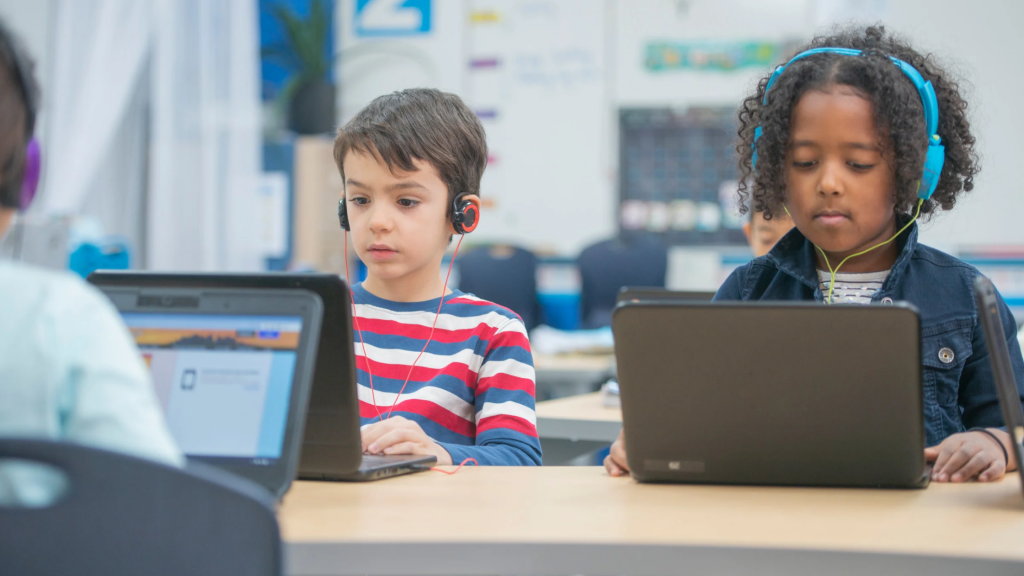Screens are everywhere now — in traditional schools, in many new microschools, and across nearly every “personalized learning” platform being marketed to families. Parents are told that more technology equals better learning, but it’s natural to wonder: do kids really need all this tech to thrive?
Parents in traditional schools often see their children spending much of the day on devices, even for tasks that used to happen face-to-face with a teacher or hands-on with materials. Families exploring microschools are sometimes surprised to find the same thing: programs that promise personalization and projects but still rely on online platforms for core instruction. It’s no wonder families are overwhelmed by options and messaging. With so many models — traditional schools, charter programs, microschools, and hybrids — it can be hard to tell what’s marketing and what’s meaningful.
Through our three micro lab schools, we’ve spent years studying how children learn best. While meaningful technology plays a role, we’ve seen that it works best when it supports curiosity and connection — not when it replaces them. Real learning happens when children collaborate, create, solve problems, and engage deeply with ideas and materials. Devices can enhance that work at certain stages in development, but they can’t drive it.
Technology itself isn’t the problem. The better question for parents isn’t “Is there tech?” but “How and why is it being used?” Smaller, intentionally designed environments have the freedom to prioritize relationships, mentorship, and real-world experiences, and to use technology thoughtfully, as a tool rather than a substitute.
At Meridian, we use technology with purpose — to support meaningful learning, not to replace it. Through our three lab schools, we’ve studied what truly works for children and families. As the microschool movement grows, we believe these conversations matter more than ever. Curious about what makes a microschool truly different? Read our full post here.
